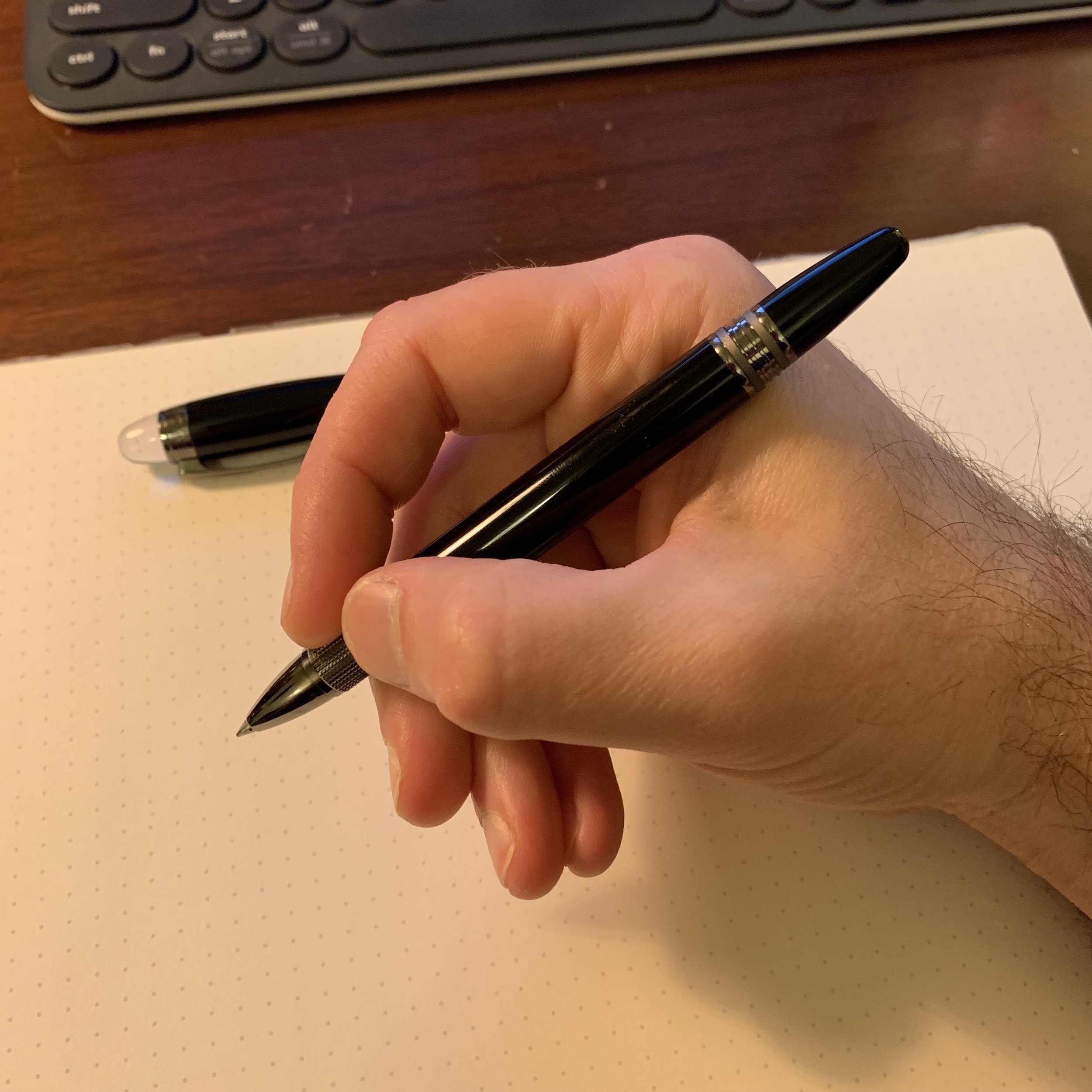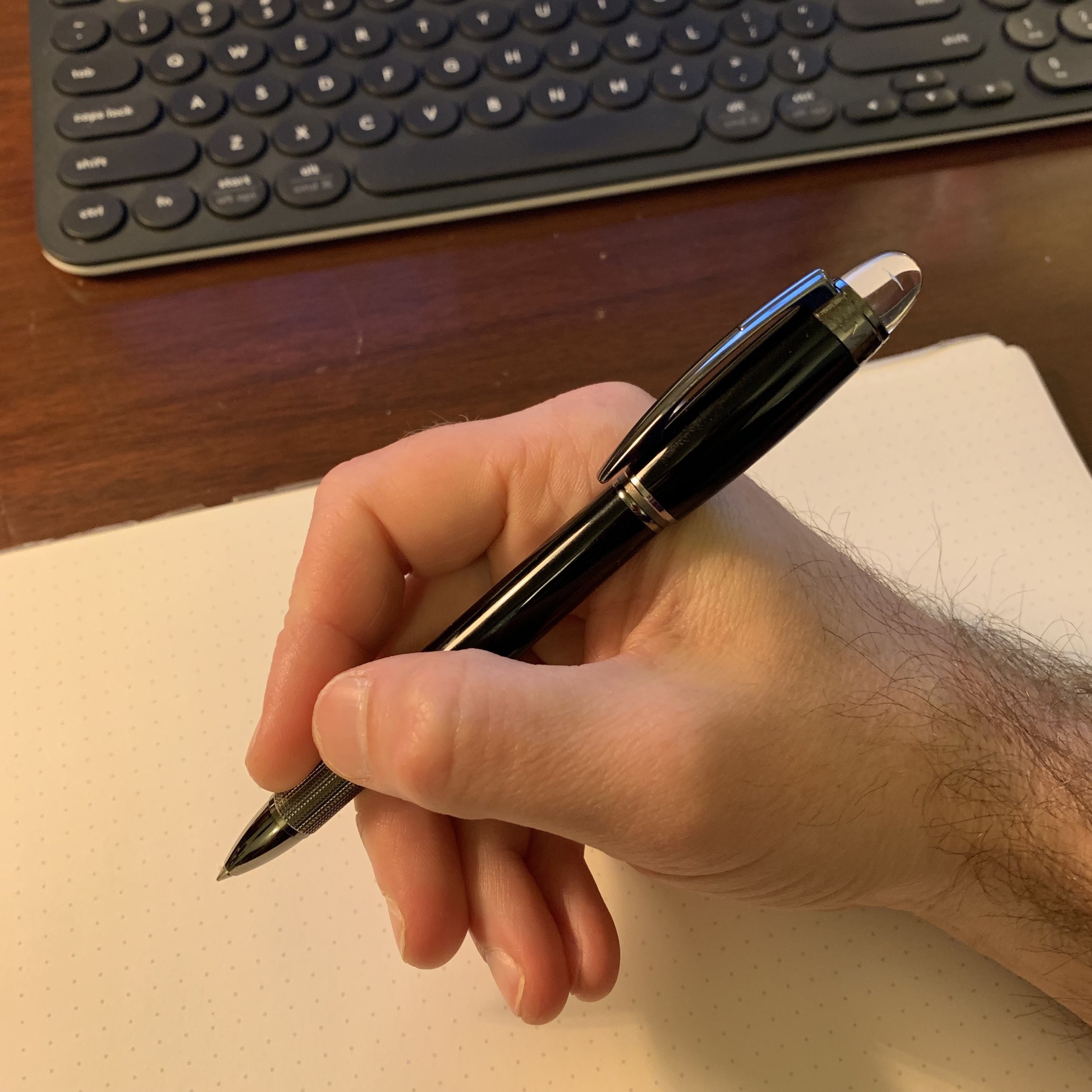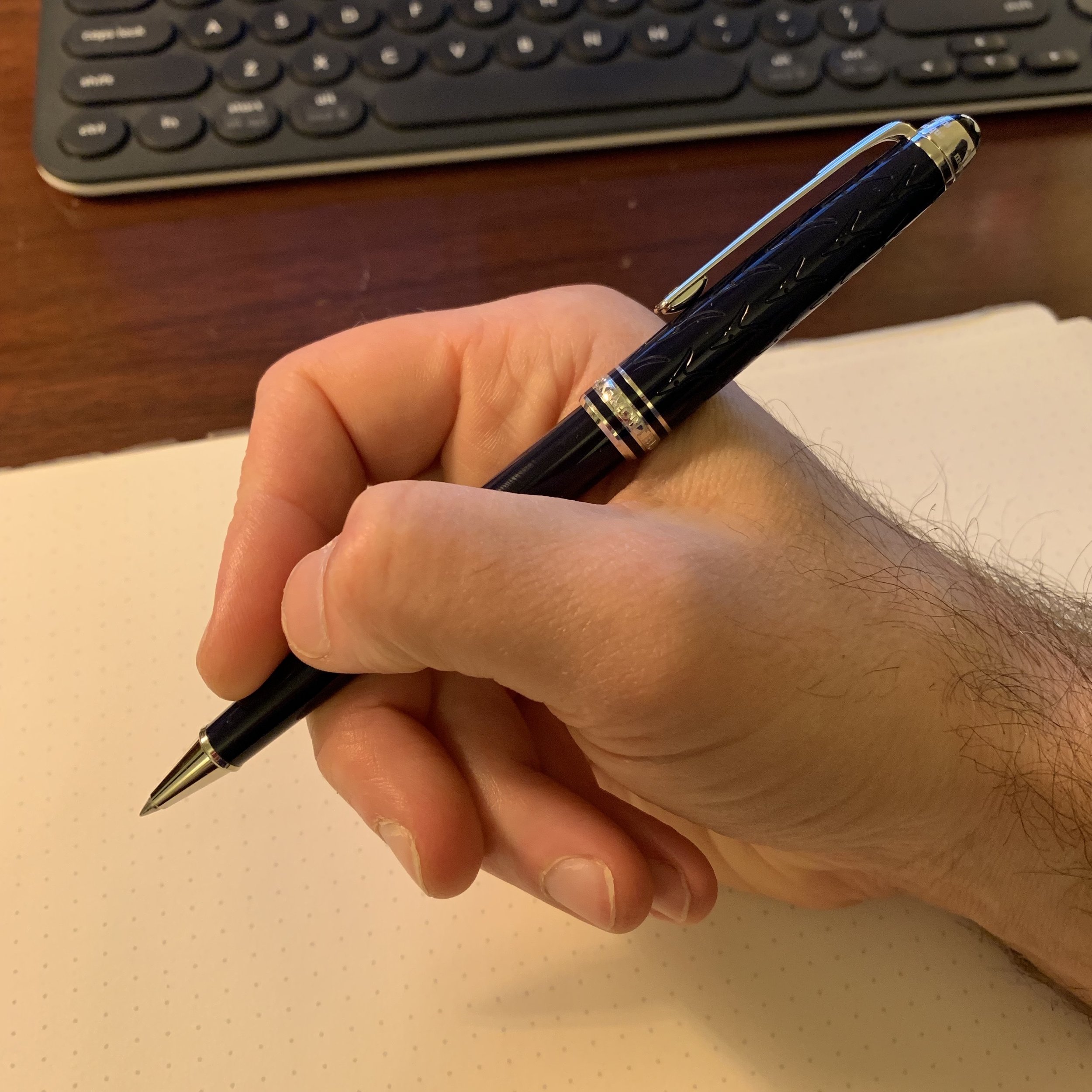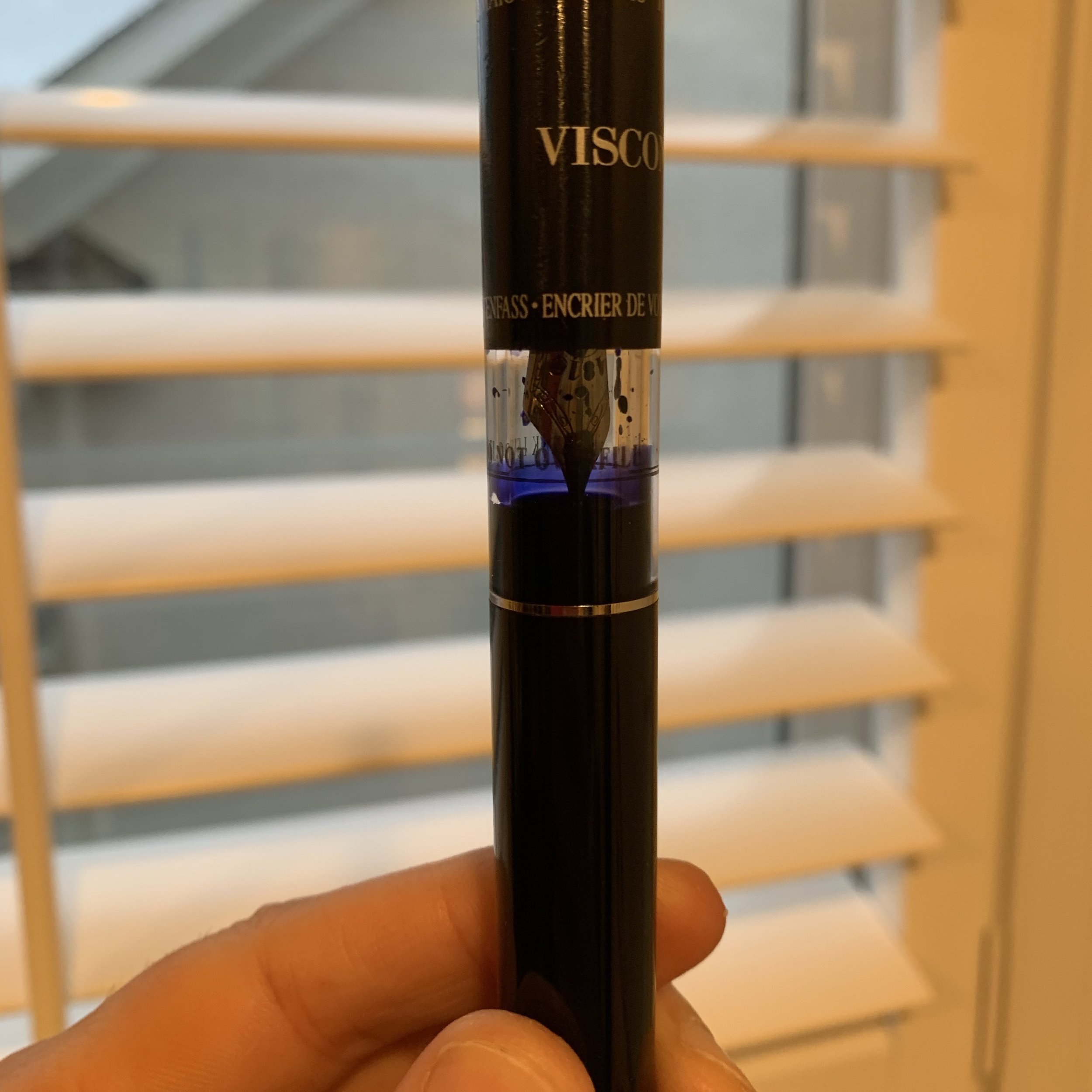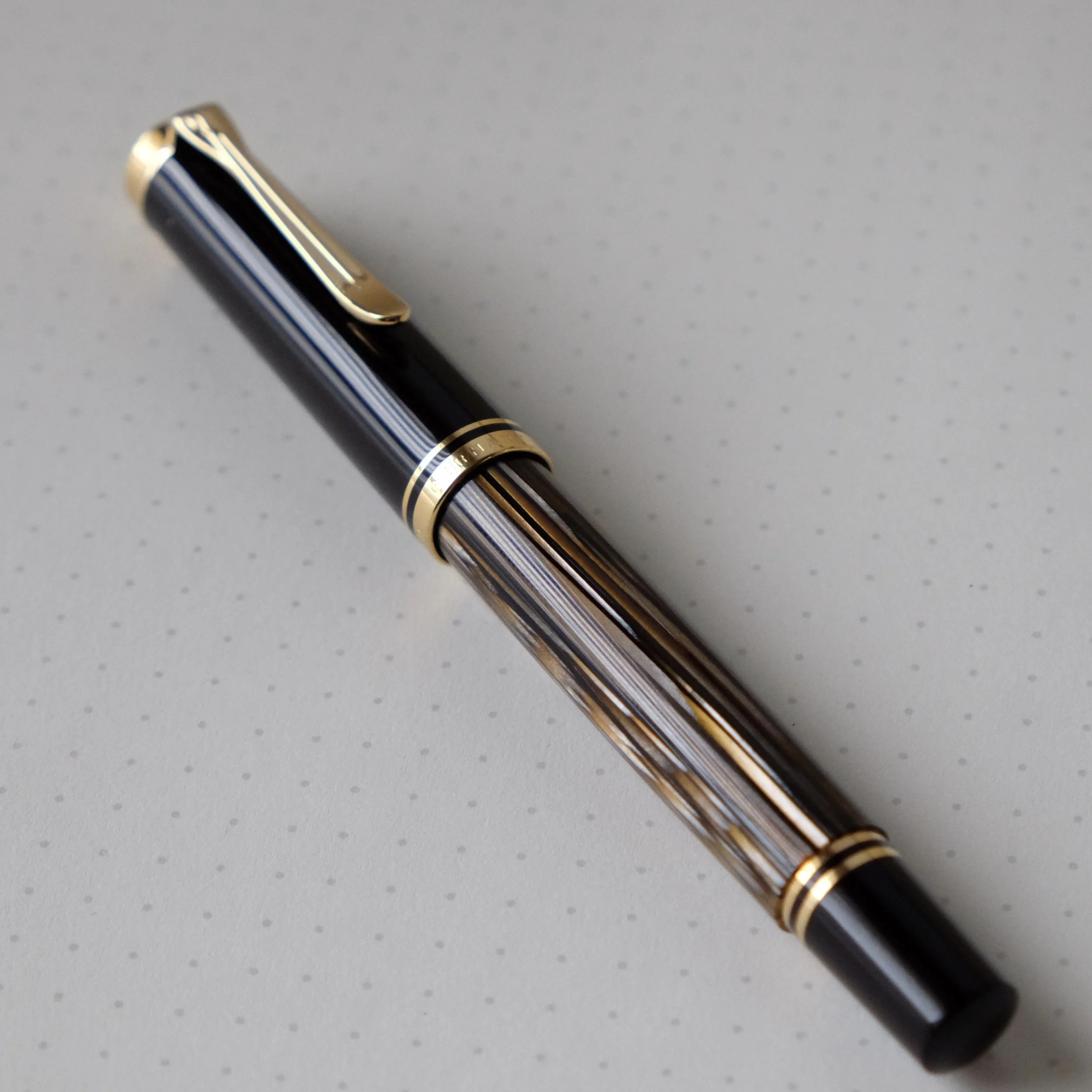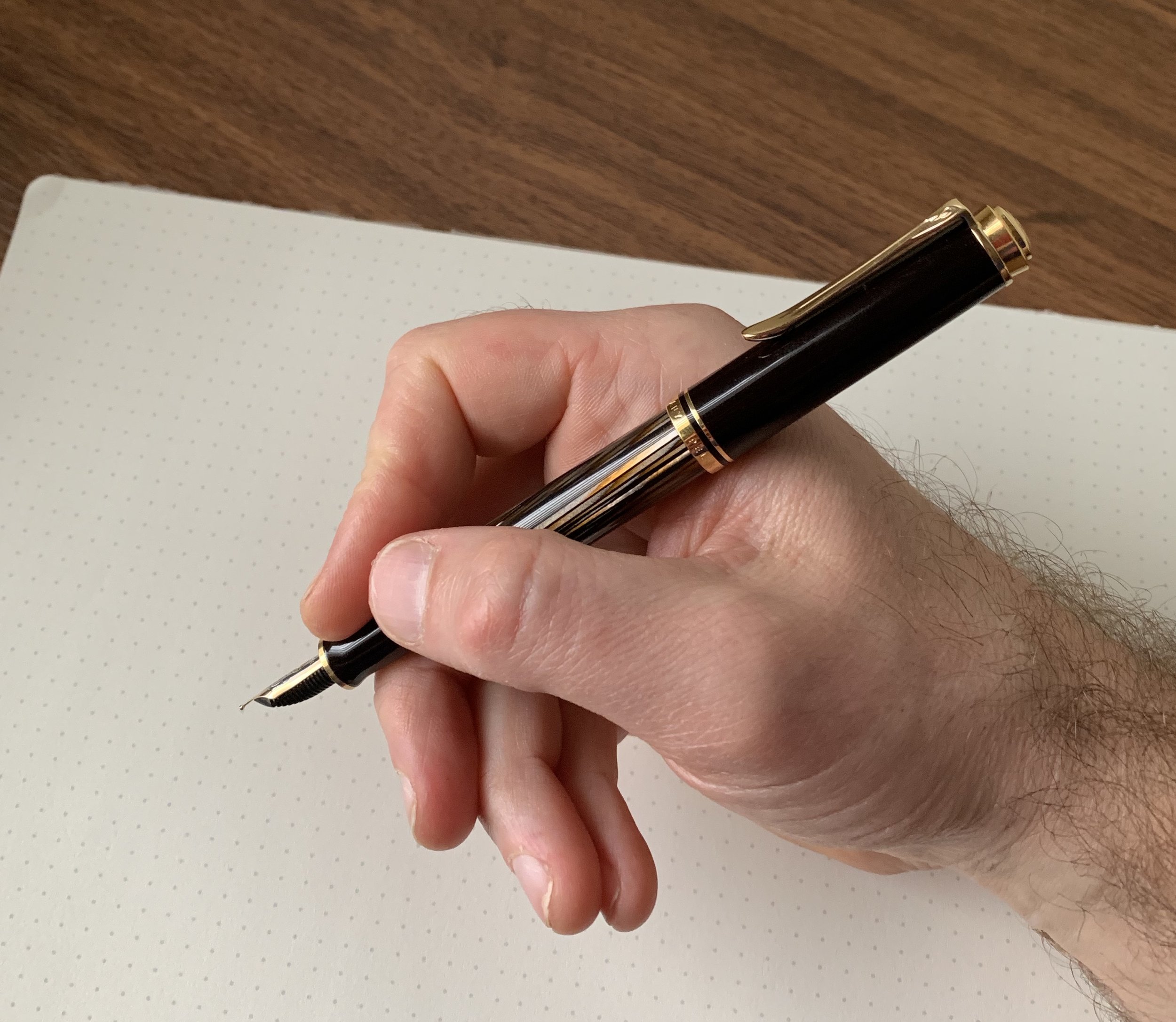Before Montblanc introduced the “M” by Marc Newson collection in order to grab some younger market share, the Starwalker was Montblanc’s attempt to introduce a more contemporary design option into their lineup. I avoided Starwalker pens for years because I didn’t like the fact that they were cartridge-only, and had heard reports of temperamental fountain pen nibs (much like the “M”). I also wasn’t sure about the cap. Montblanc abandoned their traditional snowcap in favor of a “floating” emblem encased in clear acrylic, which for years looked a little funky to me but grew on me over time. I still sometimes think of the Starwalker as the “Montblanc pen for those who don’t want a pen that looks like a Montblanc.”
Shown here compared against the Le Petit Prince Classique rollerball. The Starwalker is a larger pen, sitting between the Classique and the 146, but it’s still slender enough for me to characterize it as “slim.”
Honestly, what finally made me pull the trigger on a Starwalker was the fact that I ran across one of the “Midnight Black” versions at a brick-and-mortar pen retailer who was discontinuing the line, and phasing out all of their Montblanc stock. (This was many months ago, so the location of the sale isn’t important because all the pens are gone and weren’t sold online.) I’ll never pass up the opportunity to grab a blacked-out pen with ruthenium trim a steep discount, especially one as nice as this.
Even the threading on the back of the barrel is ruthenium-plated, with the same texture as on the cap band of my Montblanc 146 “Ultra Black.”
Personally, I think the Starwalker design lends itself more to a rollerball/fineliner or ballpoint, as opposed to a fountain pen. The barrel-end is threaded, so if you want to post this pen you will have to thread the cap onto the back. Posting this pen therefore takes some time, and when I’m using it I tend to post the cap and leave it off - something you can’t necessarily do with a fountain pen without the nib drying out.
Other notable design touches are the introduction of a knurled metal grip, which emphasizes the pen’s modern look that’s a bit out of character for Montblanc. Some find knurled metal uncomfortable regardless, but this section is very well done. The knurling isn’t particularly sharp, and I’ve had no issues using this pen for long periods of time, posted or unposted. The cap doesn’t add a lot of weight when it’s posted, since it’s acrylic. As always, Montblanc fineliner and rollerball cartridges are of exceptional quality, if somewhat pricey.
Some models of the Starwalker have more prominent texture on the grip than others. The “Midnight Black” edition features fairly pronounced knurling, but it’s not uncomfortable to use.
Montblanc also incorporated a different clip design into the Starwalker - it’s arched rather than flat, and the clip is longer than the cap. “Montblanc” is also engraved around the top, just below the acrylic dome.
Another shot of the “Snowcap” emblem and how it “floats” in the acrylic.
Takeaways and Where to Buy
I enjoy writing with my Starwalker, and typically keep it in a two-pen leather sleeve with my Montblanc Le Petit Prince Classique rollerball, as a two-pen carry for when I can’t use my fountain pens. It makes a great travel set, and I keep one pen loaded with a blue refill; the other red. Because the Starwalker is slightly heavier than the Classique, those bothered by metal sections or heavier pens might want to hold a Starwalker and write with it before purchasing.
It appears that the Midnight Black version of the Starwalker is being phased out. Montblanc currently has them in stock via their website, so if you like the look of this particular edition I’d grab it while you can. Other retailers, such as our sponsor Appelboom, have different versions of the Starwalker Rollerball in stock, such as the standard Black Resin, the “Ultra Black”, or the “Black Mystery”. Pricing on all of these pens run around $400, so as with all Montblanc pens, it’s not a purchase to be made lightly.
Note: You will sometimes see the Rollerball version of the Starwalker advertised as a “fineliner,” but they’re one and the same other than the refill that ships with the pen. Montblanc fineliner and rollerball refills use the same format and are interchangeable in all Montblanc rollerball or fineliner pens.
Disclaimer: This post contains affiliate links. I purchased the pen featured in this post with my own funds, for my own collection.
